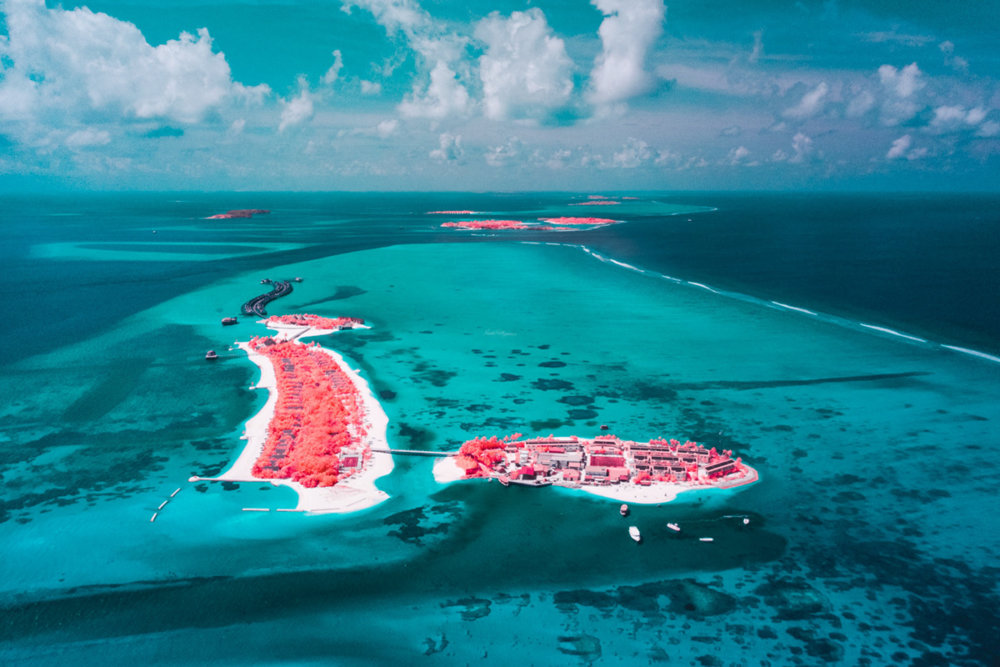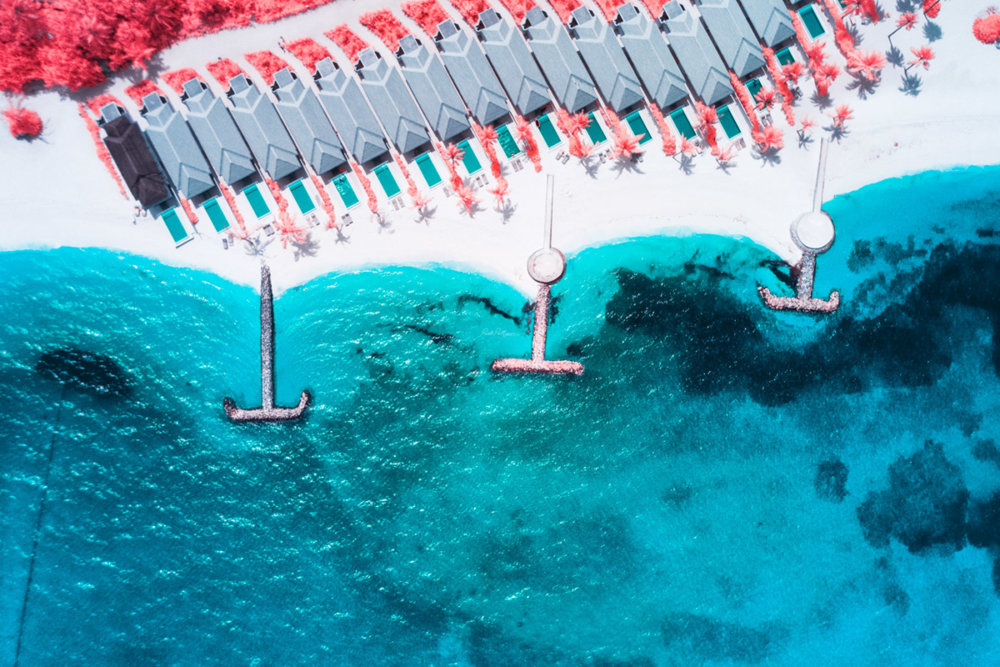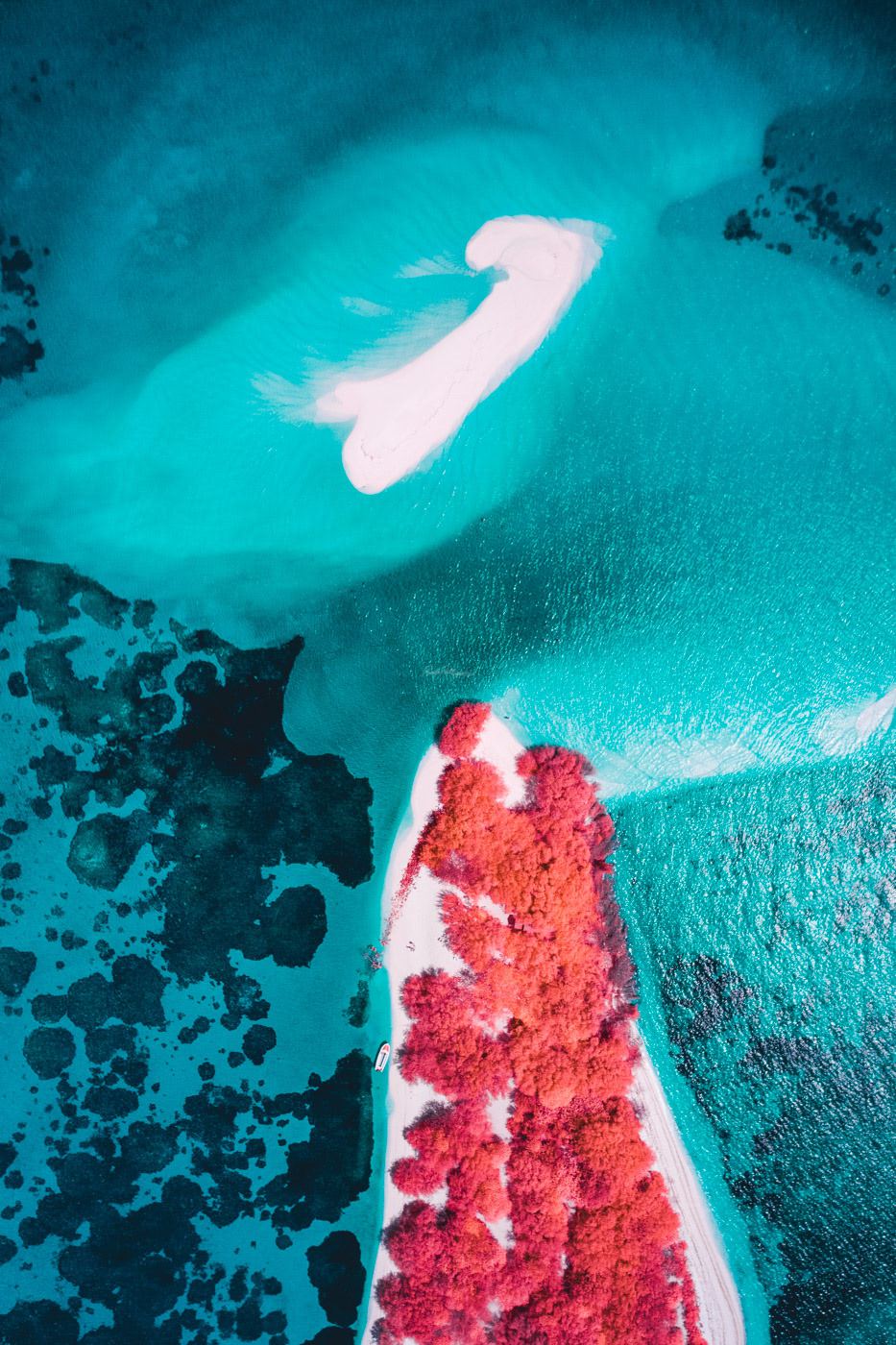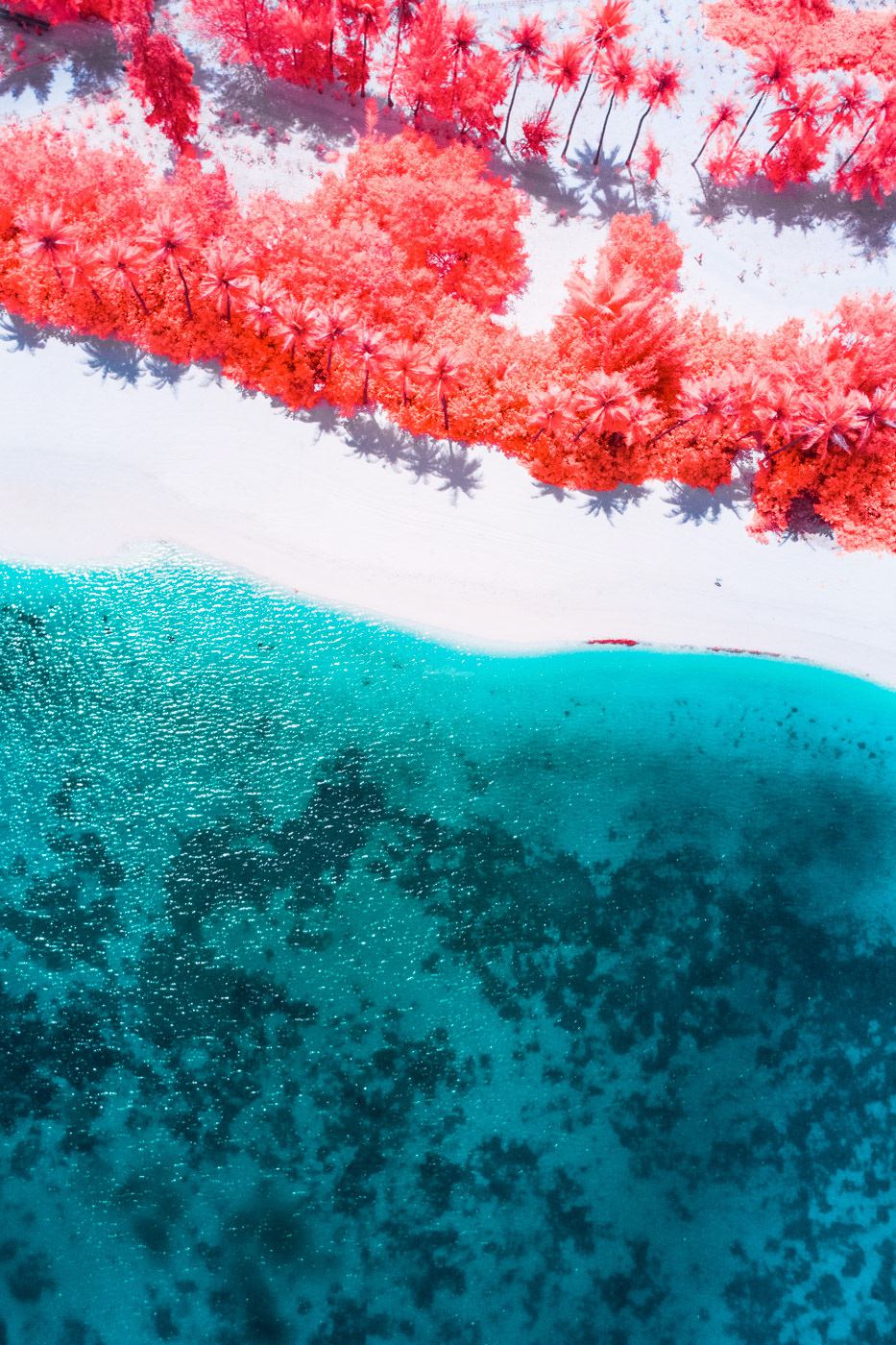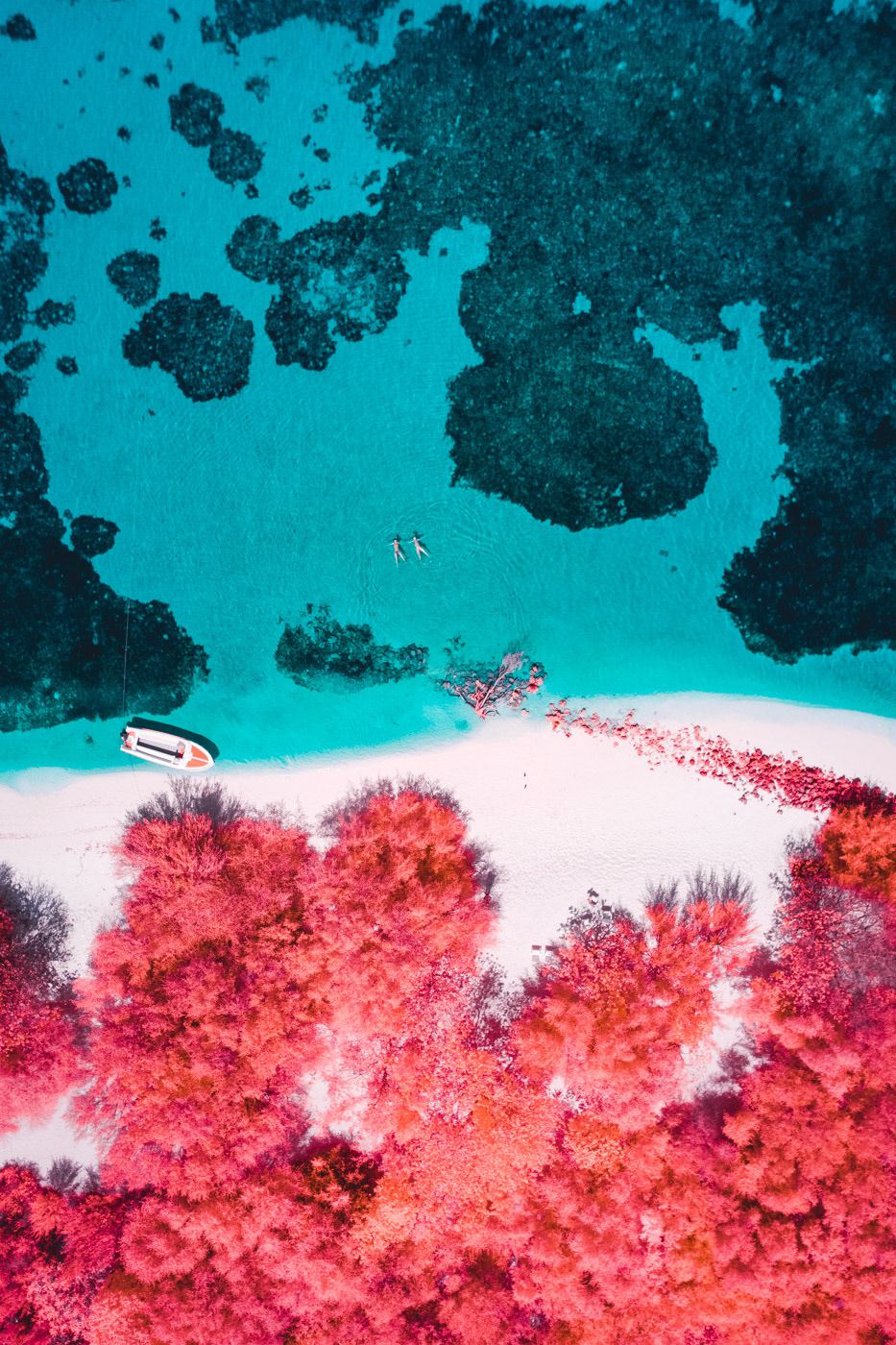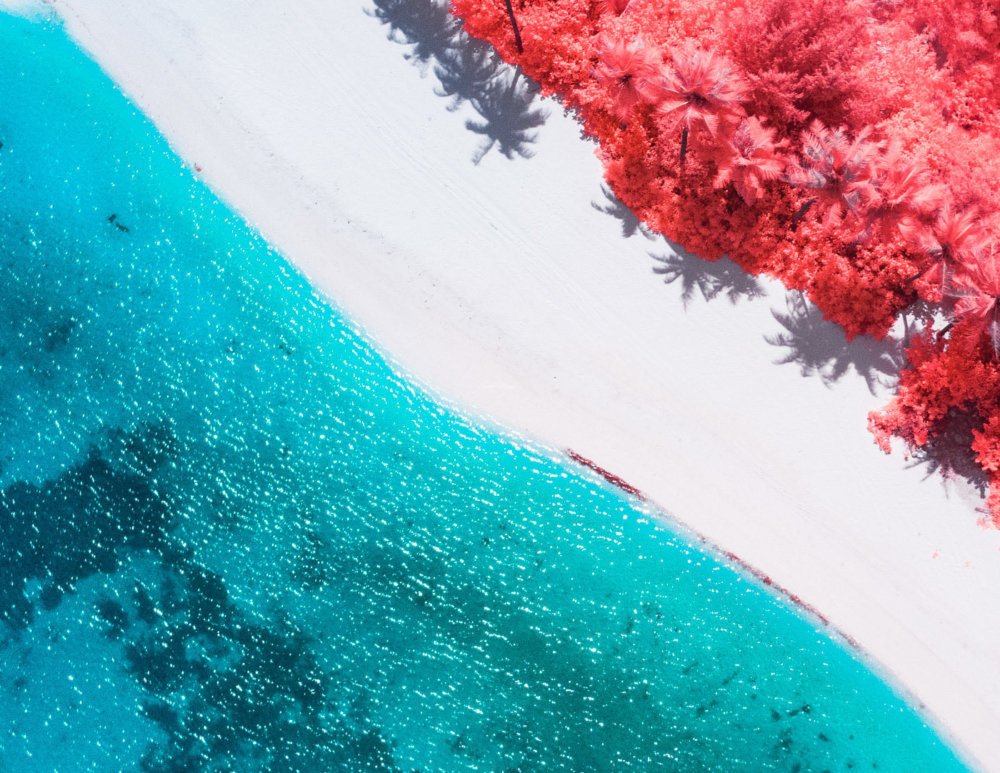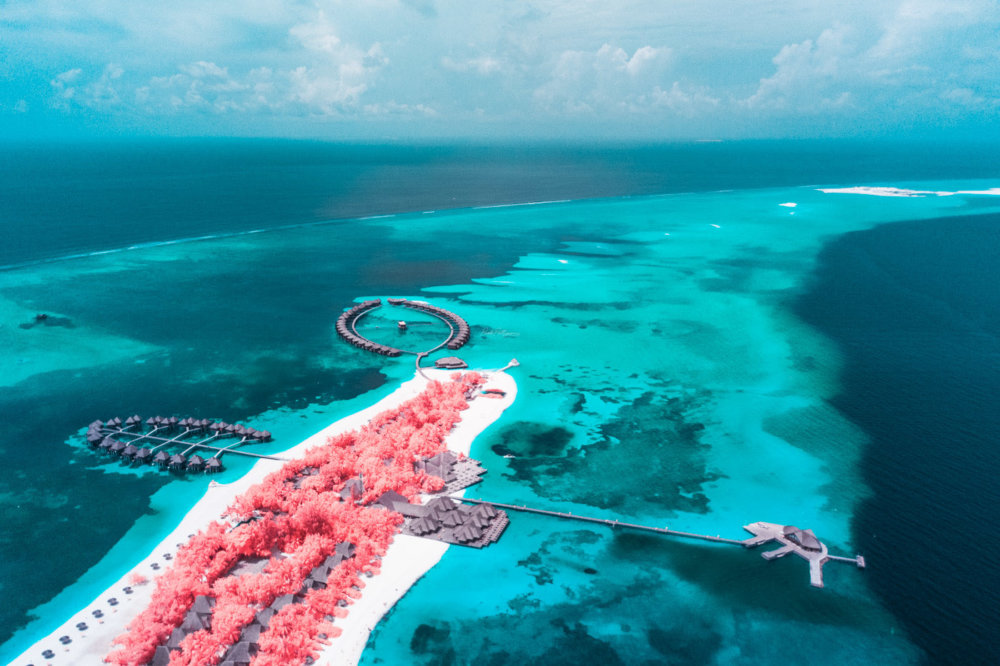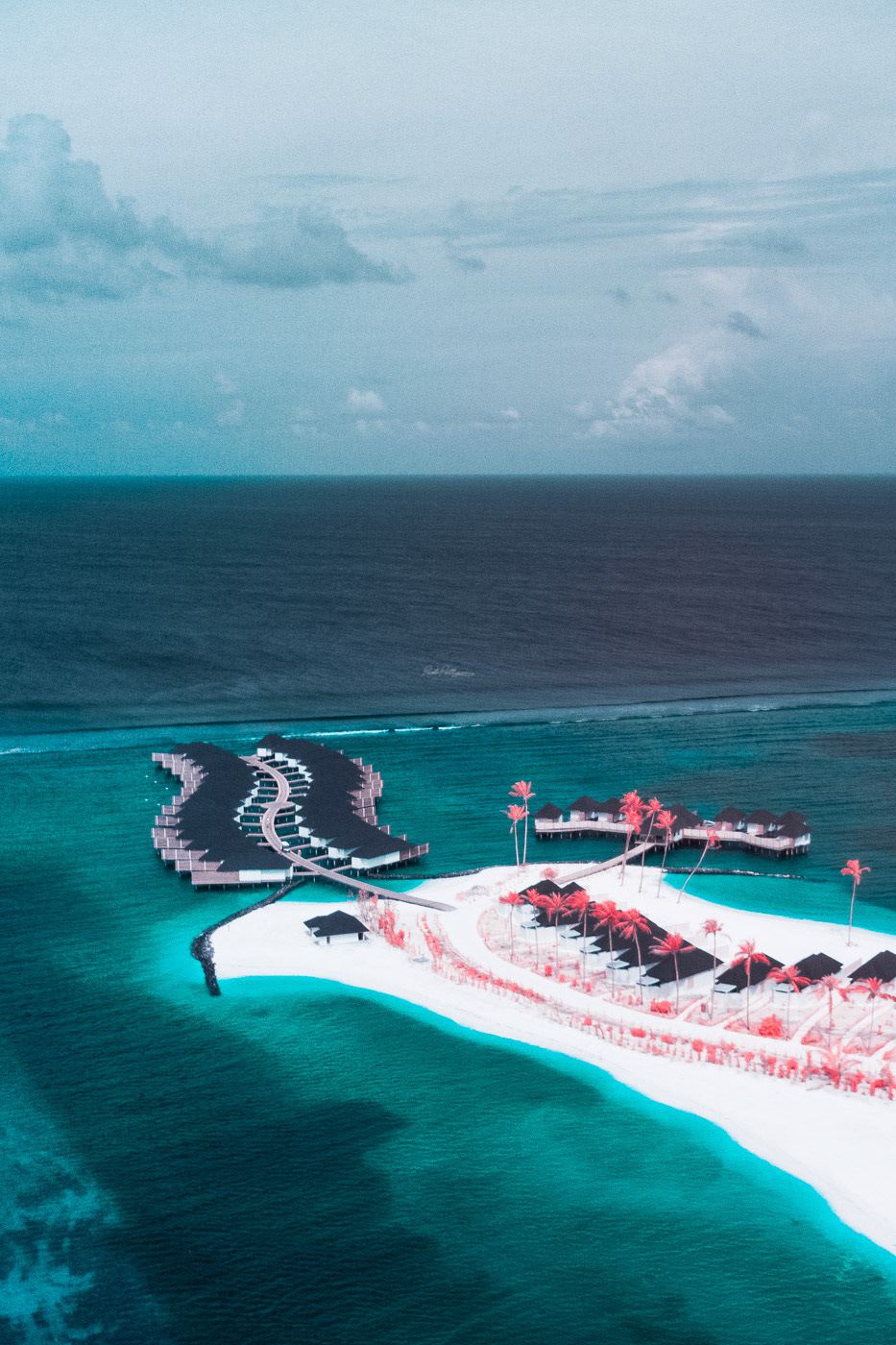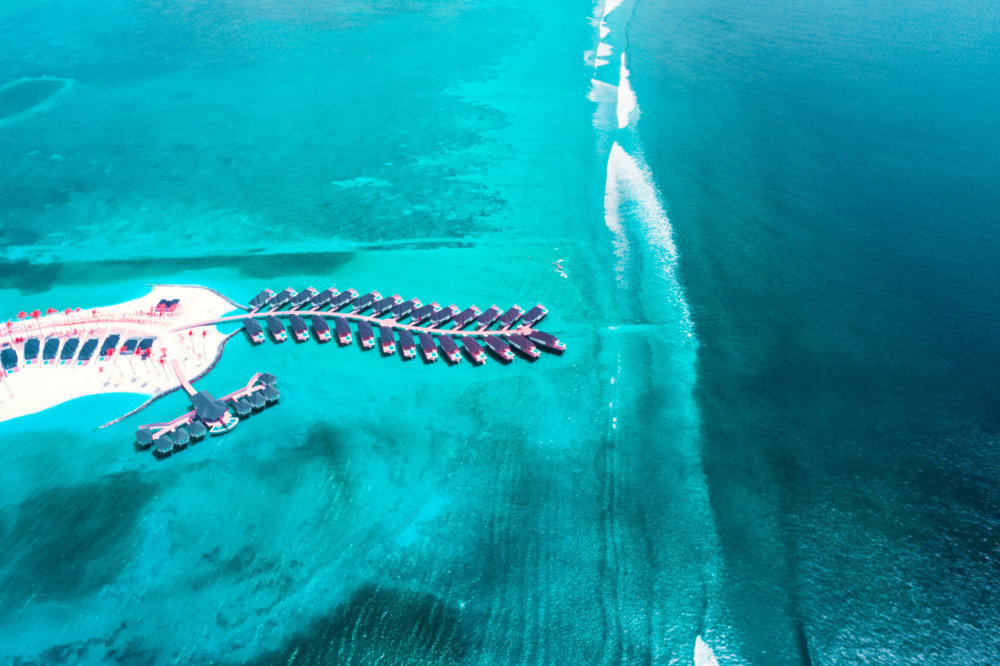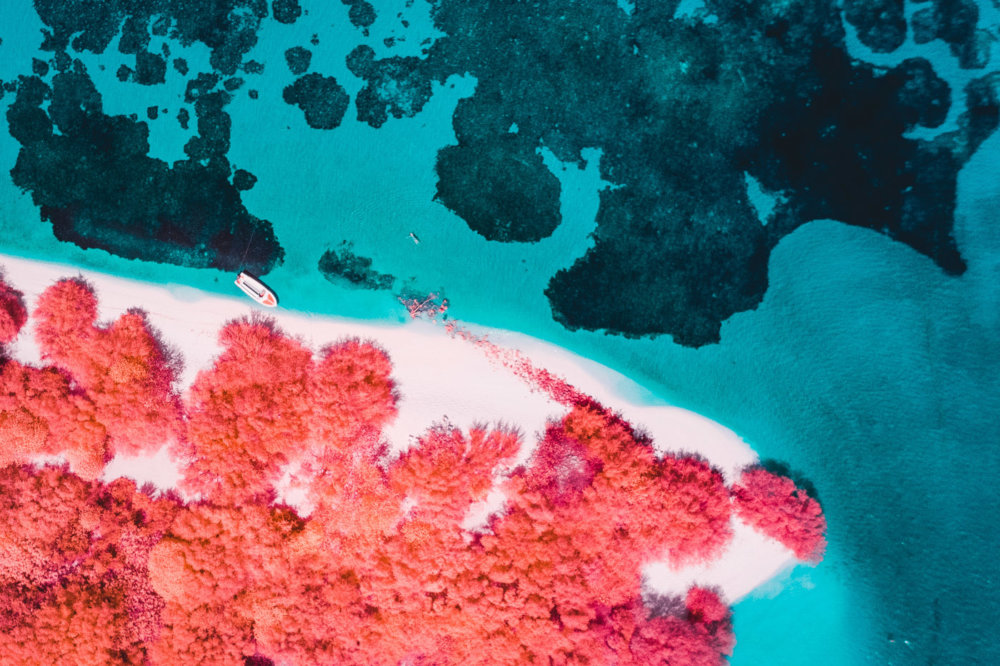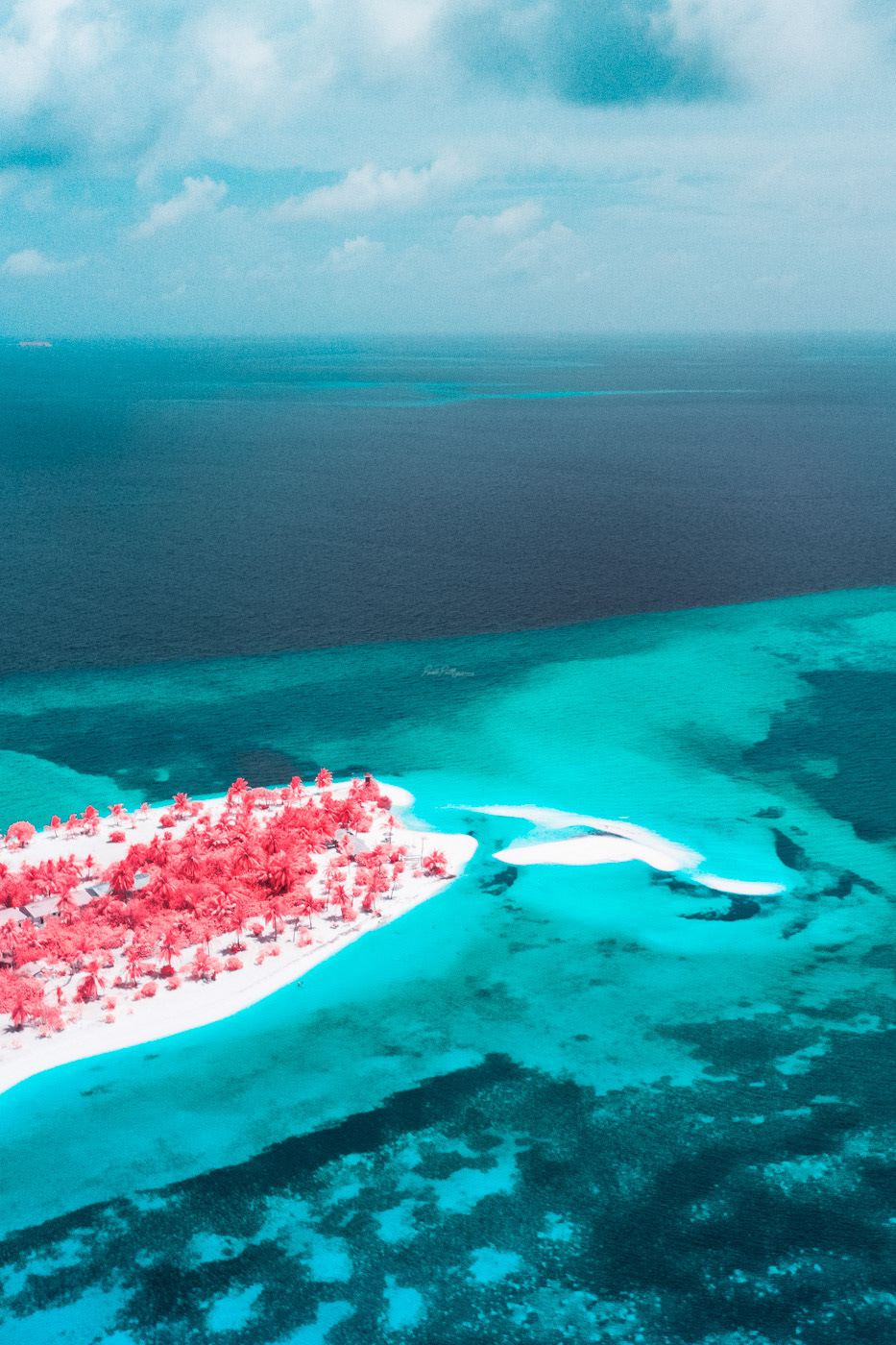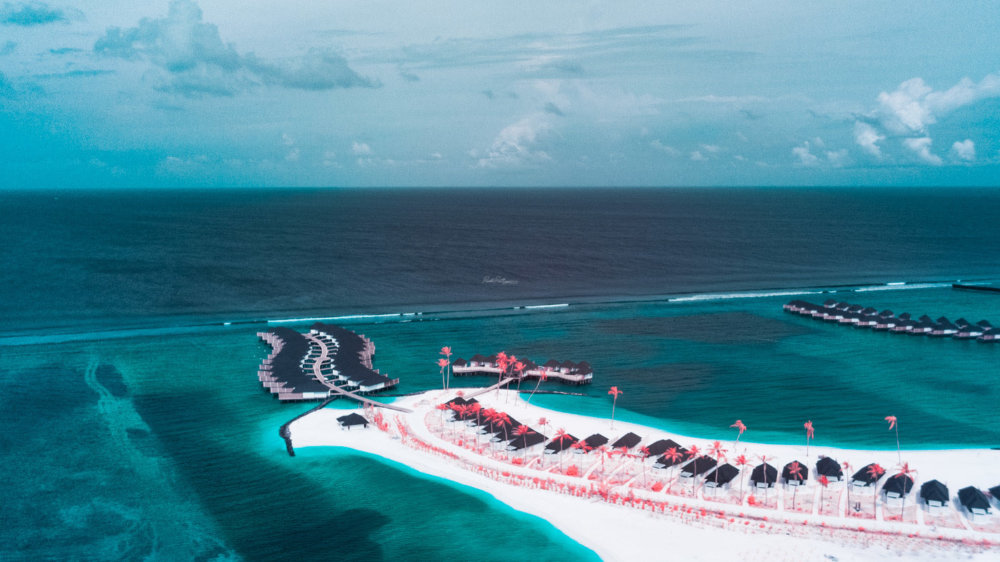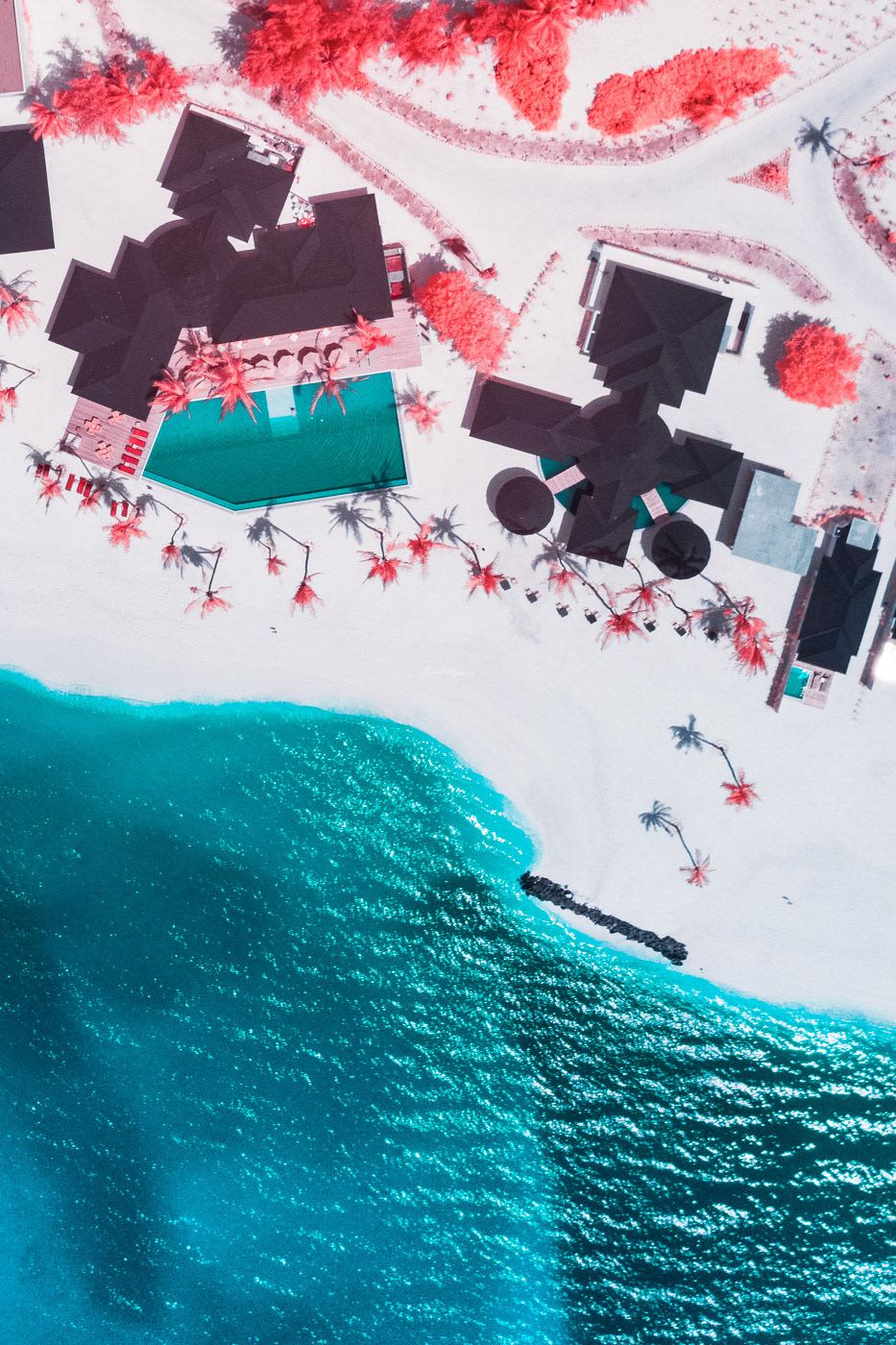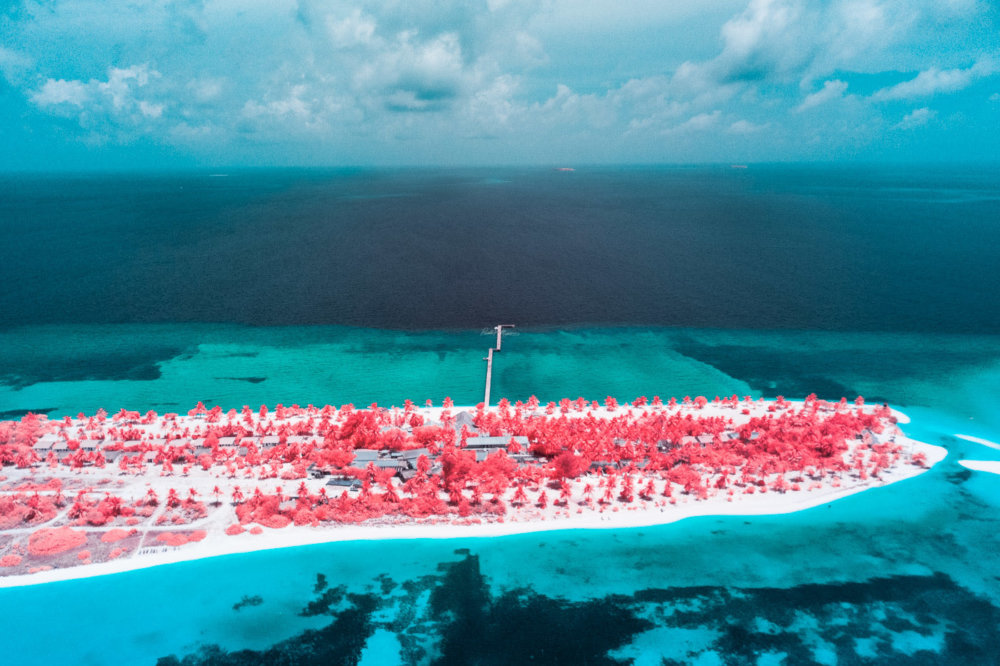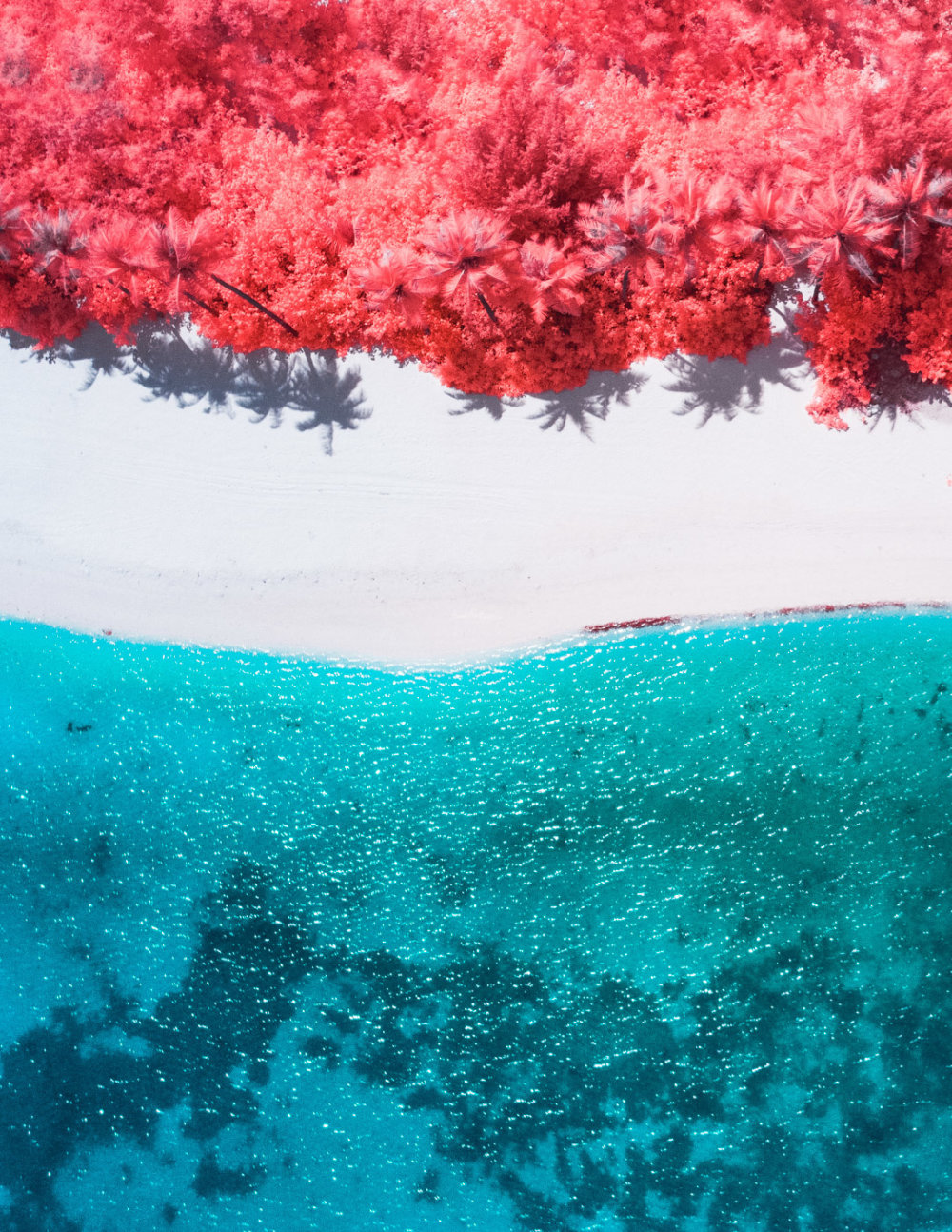Paolo Pettigiani, an adept Italian art director, elevates the concept of visual storytelling through the mesmerizing use of infrared photography in his latest series, “INFRALAND”. Featuring the ethereal landscapes of the Maldives, Pettigiani’s work transcends conventional representations of these tropical paradises. Employing aerial infrared photography, he unveils a dreamlike vista where natural elements such as leaves, grass, and trees are transformed into surreal hues. This technique taps into the camera’s full sensitivity, capturing wavelengths visible only on the infrared spectrum. The result is a breathtaking collection where lush greens morph into vivid magentas and rich corals in pinkish tones, creating a world that feels simultaneously familiar and otherworldly.
Pettigiani’s photographs not only highlight the inherent beauty of the Maldives but also serve as a showcase of the technological innovation within modern photography. The utilization of infrared reflects a broader narrative about the potential of this medium beyond its traditional boundaries. Often employed for scientific and military purposes, Pettigiani deftly adapts it to the arts, challenging us to reconsider their perception of natural environments. The IR technique offers a fresh perspective, serving both aesthetic and illustrative roles; it illustrates nature’s invisible dynamics while offering a visually captivating experience. In a time where digital evolution continually redefines creative capabilities, Pettigiani’s work stands as a beacon of artistic exploration, reshaping how we visualize the world around us.
INFRALAND™ is a graphic and visual exploration of nature. For this project I’ve used aerial digital Infrared photography (IR). This technique enables the full sensitivity of the camera’s sensor, making it sensitive to UV, visible, and IR light. Elements with chlorophyll, such as grass, leaves and trees, strongly reflect IR light on the invisible wavelength. Infrared photography has been used to document pollution, for forest surveys in agriculture and also in military and scientific photography.
Paolo Pettigiani
More info: Website, Behance, Instagram.
